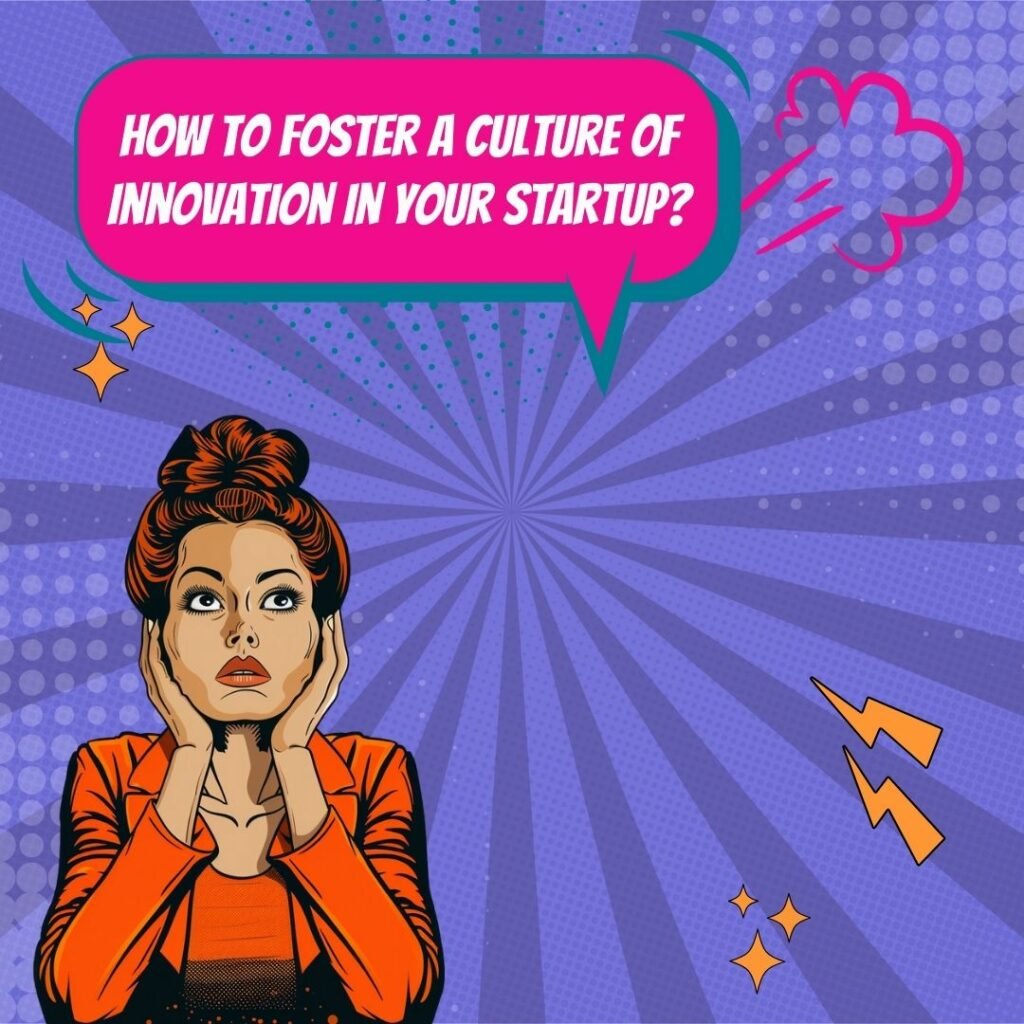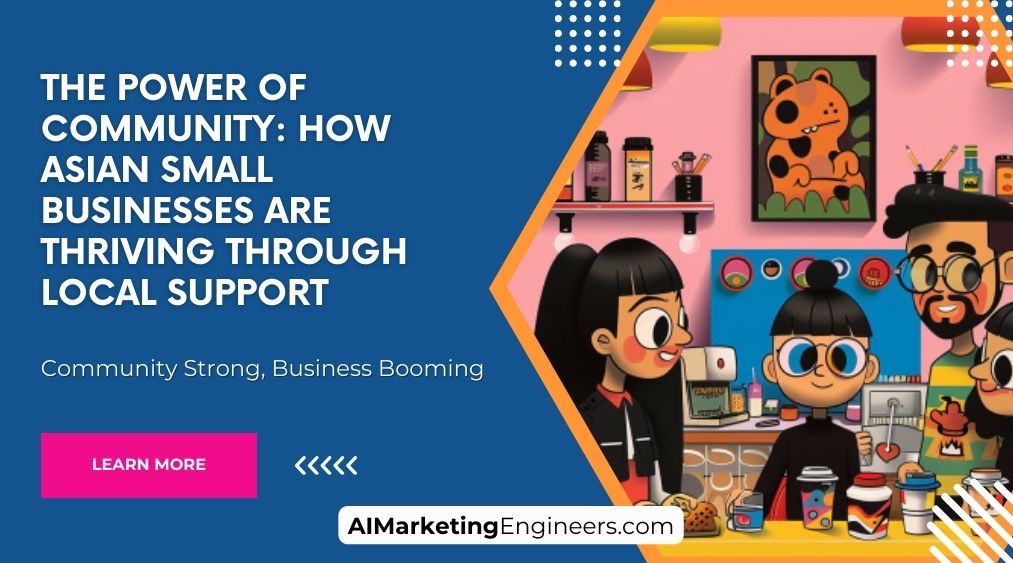Key Takeaways
✅ Empower Employees and Encourage Open Communication: Create an environment where all ideas are valued. Leaders should recognize and reward contributions, maintain transparent communication, and provide specific, timely feedback. This approach encourages risk-taking and innovative solutions.
✅ Embrace Risk-Taking and Learning from Failures: Celebrate small wins and view failures as learning opportunities. Reward experiments and mistakes to create a safe space for innovation. Encourage your team to reflect on and learn from failures, fostering growth and improvement.
✅ Embed Innovation into Your Company Culture and Values: Make innovation part of your mission, vision, and values. Involve all team members in decision-making, and set innovation goals. This ingrains innovation into company culture and motivates employees to strive for better solutions.

Introduction
Have you ever wondered why some startups seem to thrive on fresh ideas while others struggle to keep up? Building a culture of innovation in your startup is crucial in today’s fast-paced business landscape. Many founders believe fostering innovation requires a massive budget or adopting complex systems. However, the reality is more straightforward. By empowering your team and embracing a growth mindset, you can turn obstacles into stepping stones.
This article will explore modern strategies that help you cultivate an innovative culture without breaking the bank. From encouraging open communication to learning from failures, these straightforward principles will not only drive creativity within your team but also set your startup ahead of the competition. Ready to unlock the secrets of innovation? Read on to discover actionable insights that can transform your startup into a powerhouse of creativity and growth.
Top Statistics
| Top Statistics | Insight |
|---|---|
| Early-stage funding for startups jumped 99% from 2020 to 2021: $210 billion invested across 8,000 startups in 2021, with $61.1 billion raised in Q4 2021 alone. | This massive increase indicates a dynamic and supportive funding environment, crucial for fostering a culture of innovation in startups. |
| AI startups attract over $24 billion in funding per year: Funding increased 327% between 2016 and 2020. | The substantial investment in AI startups highlights the importance of embracing cutting-edge technology to stay competitive and innovative. |
| Startup founders represent diverse demographics: Founders come from various age groups, ethnicities, and education levels. | Diverse teams are more likely to come up with creative solutions, making diversity a cornerstone of an innovative startup culture. |
| Startups with a female founder or co-founder perform 63% better for VC investors: Female-led startups outperform their male-led counterparts. | Female-led startups demonstrate that inclusivity can lead to higher performance, encouraging a more inclusive and innovative work culture. |
| Design-build projects are completed over twice as fast: They outperform traditional methods in terms of cost, schedule, and quality. | The efficiency of design-build projects can serve as inspiration for startups to adopt more streamlined and efficient innovation processes. |
Building a Foundation for Innovation
A growth mindset is crucial in fostering a culture of innovation within a startup. By embracing this mindset, startups can encourage experimentation and a willingness to learn from failures. This perspective promotes continuous improvement and positions the company to adapt quickly to changes. The growth mindset sets a positive tone from the top down, helping to create an environment where new ideas are welcomed and tested. Encouraging open communication about successes and failures fosters transparency. Regularly celebrating innovative efforts can reinforce this mindset across the team.
Empowering Employees for Innovation
Intrapreneurship taps into employees' capacity to innovate within the company. Startups can foster this by providing resources, support, and a safe space for experimentation. Strategies such as allocating time for personal projects or creating internal innovation challenges can spark creativity. When employees feel empowered to take ownership of their ideas, they are more likely to contribute to meaningful innovation. Providing mentorship and training can further enhance their skills. Recognizing and rewarding innovative contributions can boost morale and encourage ongoing participation.
Embracing Risk and Learning from Failure
Creating a culture that values experimentation is key to driving innovation. Startups should encourage calculated risk-taking while establishing methods to measure outcomes and learn from failures. This involves designing small, manageable experiments that can yield valuable insights. Over time, a pattern of regular, informed risk-taking can lead to significant breakthroughs and advancements. Documenting and sharing lessons learned from failures can prevent repeated mistakes. Celebrating both successful and failed experiments can reduce the stigma of failure.
Collaboration and Diversity in Teams
Cross-functional teams are instrumental in fostering innovation. Startups should focus on assembling teams with diverse skill sets, perspectives, and experiences. This diversity leads to richer discussions and more creative solutions. Effective communication and collaboration are essential, and leaders should facilitate regular team interactions to ensure everyone is contributing and aligned towards the common goal of innovation. Incorporating diverse viewpoints can reveal hidden opportunities. Creating inclusive team dynamics ensures all voices are heard and valued.
Continuous Improvement and Iteration
A well-established feedback loop is essential for driving continuous improvement. Startups should actively seek feedback from customers, employees, and stakeholders. Tools like surveys, focus groups, and open forums can be effective. The key is to take this feedback seriously and incorporate it into the innovation process, fostering an environment of ongoing iteration and refinement. Regularly updating products based on feedback can enhance user satisfaction. Tracking the impact of changes helps refine future iterations.
Leadership's Role in Innovation
Leadership plays a critical role in shaping a culture of innovation. Leaders must model innovative behavior by being open to new ideas and taking calculated risks themselves. Providing the necessary resources and support is also essential. A clear vision for innovation, effectively communicated, can inspire and motivate employees to contribute their best ideas, driving the startup forward. Encouraging a fail-forward attitude can reduce fear of failure. Regularly communicating progress towards innovation goals keeps the team aligned and motivated.
AI Marketing Engineers Recommendation
Recommendation 1: Prioritize Continuous Learning and Development: Encourage your team to constantly upgrade their skills and stay ahead of the curve. According to a 2022 LinkedIn report, 94% of employees say they would stay at a company longer if it invested in their learning and development. Offer workshops, online courses, and seminars in cutting-edge technologies and methodologies. This not only keeps your workforce competent but also fosters a culture where innovation is the norm, not the exception.
Recommendation 2: Foster Open Communication and Idea-sharing: Create open channels for communication where team members feel comfortable sharing their innovative ideas without fear of criticism. A study by McKinsey highlights that 84% of executives believe that innovation is critical to their growth strategy but only 6% are satisfied with their company's innovation performance. Leveraging collaborative tools like Slack or Microsoft Teams can help democratize idea-sharing, making it easy for employees at all levels to contribute their thoughts.
Recommendation 3: Utilize AI and Data Analytics for Better Decision-Making: Employing AI and data analytics tools can streamline your decision-making processes, making it easier to identify burgeoning market trends and customer needs. According to Gartner, 70% of organizations will integrate AI to assist employees in their tasks by 2025. Tools like IBM Watson and Google Analytics can be instrumental in gaining actionable insights from complex data sets, ensuring your innovative strategies are grounded in solid evidence rather than gut feeling.
Relevant Links
- Unlock the Secrets to Effective PPC Campaigns
- Master the Art of Creating Engaging Content
- Boost Your ROI with Strategic Ad Placement
- Transform Your Marketing Efforts with Personalized Campaigns
- Enhance Your Brand with Customer Feedback
Conclusion
In today's fast-paced business world, building a culture of innovation in your startup is not just a luxury but a necessity. Embracing a growth mindset lays a strong foundation, encouraging employees to experiment and learn from failure. Empowering intrapreneurship means giving your team the tools and freedom to innovate, turning ideas into real opportunities. The importance of cross-functional teams cannot be overstated; diversity in skills and perspectives fuels creativity and new solutions.
Creating a robust feedback loop ensures continuous improvement, making sure that innovations are never stagnant. Leaders play a pivotal role by setting an example, providing resources, and embodying the vision of innovation. Incorporating these key elements will not only drive your startup to new heights but also sustain its growth in the long run. So, are you ready to foster a culture of innovation in your startup? Remember, the journey to innovation starts with a single step but requires commitment, flexibility, and a forward-looking approach. Take that step today and watch your startup evolve and thrive.
FAQs
Question 1: How do you define innovation?
Answer: Innovation is the process of introducing new or improved products, services, or processes that create value for customers and the organization.
Question 2: What is innovation management?
Answer: Innovation management refers to the systematic management of introducing anything new for the organization, encompassing a wide variety of activities, including idea management.
Question 3: What is idea management?
Answer: Idea management is the systematic process of collecting and developing ideas and insights to get the most value out of them.
Question 4: What is idea generation?
Answer: Idea generation is the process of creating, developing, and communicating ideas, focusing on coming up with possible solutions to perceived problems and opportunities.
Question 5: How do you approach innovation?
Answer: Approach innovation by focusing on solving real problems, communicating expectations clearly, and using techniques like SCAMPER, opposite thinking, brainstorm cards, and analogy thinking to generate and evaluate ideas.
Question 6: How do you find the right business idea?
Answer: Find the right business idea by considering your strengths, passions, and market needs, and then evaluating and prioritizing potential ideas based on their potential, feasibility, and innovation.
Question 7: How do you promote active collaboration and improve participation rates in ideation?
Answer: Promote active collaboration by focusing on real problems, communicating expectations clearly, and using various techniques to generate and evaluate ideas.
Question 8: What is an idea challenge?
Answer: An idea challenge is a focused effort to generate and develop ideas around a specific problem or opportunity, often involving a structured process and clear goals.
Question 9: What questions should you ask before starting an innovation project?
Answer: Ask questions like:
- Is there already an effective but less innovative solution to your problem?
- Are you innovating for the sake of innovating?
- Is your innovation economically scalable?
- What does your long-term success or failure look like?
- What else could be done with the donor money your project is absorbing?
Academic References
- Teece, D. J., Pisano, G., & Shuen, A. (1997). Dynamic Capabilities and Strategic Management. Strategic Management Journal, 18(7), 509-533. This seminal paper introduces the dynamic capability framework which outlines how organizations can achieve and sustain competitive advantage by leveraging sensing, seizing, and transforming capabilities. It highlights the importance of these capabilities in fostering innovation, especially in collaboration with startups.
- Cooke, P., Clifton, N., & Oleaga, M. (2005). Social Capital, Firm Embeddedness and Regional Development. Regional Studies, 39(8), 1065-1077. This research emphasizes the essential role of regional factors such as knowledge, agglomeration, and openness in enhancing the innovative capacity of startups and incumbent firms. It highlights how startups benefit significantly from the regional knowledge stock, whereas incumbent firms gain from urbanization economies and regional openness.
- Ries, E. (2011). The Lean Startup: How Today's Entrepreneurs Use Continuous Innovation to Create Radically Successful Businesses. New York: Crown Business. Eric Ries introduces the Lean Startup methodology which advocates for market research, problem identification, and iterative product development. His book has become a foundational text in entrepreneurship, outlining a systematic approach to building innovative companies by continuously testing and refining their products.












